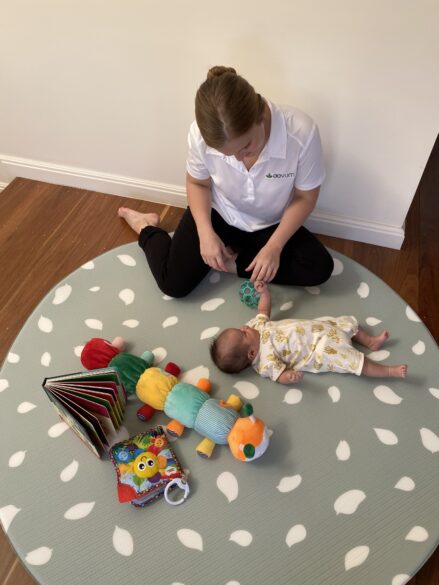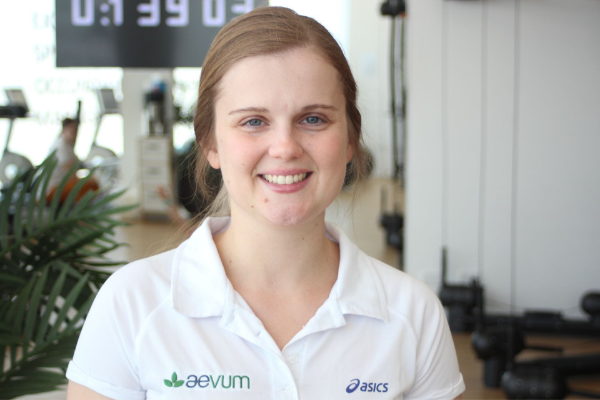Children’s bodies develop at different rates and the many intricacies and complexities of a growing body can often come with complications that parents don’t have the expertise to handle on their own.
We spoke to Aevum Kids’ Emily Johnson, their chief Physio working in Paediatrics, about the different reasons that your child may benefit from the specialised care and support that only a qualified Paediatric Physiotherapist can offer.
What is paediatric physiotherapy?
Paediatric Physiotherapy involves anything and everything related to the physical development of infants, children and adolescents. Children despite being ‘little humans’, can’t be treated as ‘mini adults’, because quite simply, their needs are different in just about every way. Children require a very different style of care, with consideration of their holistic growth and development.
The core foundation of Aevum Kids is achieving a child and family-centred model of care. This means placing “children and their interests at the centre of thinking and healthcare practice, and involves the inclusion of children and young people as participants in their care and decision-making” A child’s occupation is to learn and play, which are key concepts integrated into Aevum Kids.
A physiotherapist working in paediatrics has chosen to dedicate and specialise their career by working with children and understanding the building blocks of child development. These skills are utilised in the assessment, diagnosis and treatment of a range of movement difficulties and developmental concerns. A Paediatric Physiotherapist works closely with other members of a child’s team, this can include their family, teachers, child-care educators and other medical professionals involved in their care.

How can a Paediatric Physio help my child?
Ok, so what kind of things can a Paediatric Physiotherapist assist with managing? The list is just about endless!
Here is a guide based on different age groups.
Babies
- Flattened or abnormal head shape (positional plagiocephaly)
- Tight neck muscles (torticollis)
- Abnormal foot postures (Positional talipes)
- Developmental Dysplasia of the Hip
- Difficulties with tummy time
- Brachial plexus injury
- Monitoring and support of the development of premature infants
- Delays in achieving gross motor milestones e.g. lifting head up during tummy time, building neck strength, rolling, crawling and more
Toddlers
- Abnormal alignment or walking styles, for example, up on toes or turned in feet
- Unusual movement patterns e.g. w-sitting
- Delays in achieving gross motor milestones e.g. pulling to stand, cruising, standing without support, walking and more
Pre-schoolers
- Delay in achieving gross motor milestones
- Clumsy kids who fall or trip regularly
- Concerns regarding alignment or movement patterns
- Children requiring assistance developing school-readiness skills such as throwing and catching and navigating play equipment
School-age and beyond!
- Gross motor difficulties, for example, challenges keeping up with peers
- Concerns about muscle tightness, abnormal posture or movement patterns
- Sports-specific injuries or performance management
- Management of acute injuries and pain
- Management of child-specific orthopaedic conditions such as Severs Disease
- Strengthening programs
- Weight management programs
- Post-operative management e.g. following a broken bone
Children with any neurological, genetic, developmental or respiratory conditions such as:
- Cerebral Palsy
- Down Syndrome
- Global developmental delay
- Muscular dystrophy
- Spina bifida
- Autism Spectrum Disorder
- Joint hypermobility
- Rheumatological conditions such as juvenile arthritis
- Respiratory conditions such as cystic fibrosis
How do I get in touch?
If you have questions or concerns relating to any of the above, contact Aevum Kids to seek support for your child’s physical development and physiotherapy needs.
- The concept of child-centred care in healthcare: a scoping review protocol Ford, Karen1,2; Campbell, Steven1; Carter, Bernie1,3; Earwaker, Louise4 JBI Database of Systematic Reviews and Implementation Reports: April 2018 – Volume 16 – Issue 4 – p 845-851 doi: 10.11124/JBISRIR-2017-003464
